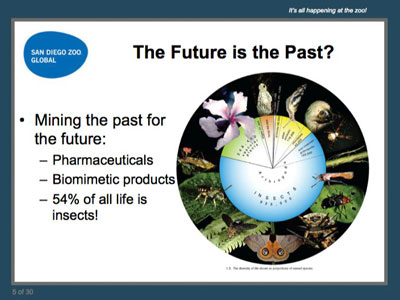 |
Human Relations Skill Development: Team Building Skills and Strategies |
0.67 |
Being able to communicate effectively is an essential human relations skill for school-age care professionals. To be a good communicator, school-age professionals need to understand the components of communication, and how the communication process works. They need to identify barriers to clear communication, and develop strategies for minimizing or eliminating barriers to communication. School-age care professionals also need to work cooperatively with other team members to solve problems and conflicts. In this course, we will explore skills and strategies for team building. |
 |
Basic Health & Safety Requirements for Certification |
6.00 |
Best practices and standards for health and safety are the foundation of quality child care. Meeting the basic health and safety needs of all children sets the stage for positive child outcomes.
This health and safety orientation module provides an overview of the basic health and safety requirements and best practices in nine of the topic areas outlined in the Child Care and Development Block Grant (CCDBG) Reauthorization of 2015. The topics are as follows:
Safe spaces; Transportation safety; Handling and storage of hazardous materials; Emergency preparedness; Prevention and control of infectious disease; Food and allergic reactions and how to respond; Administration of medication; Shaken baby syndrome/abusive head trauma; Safe sleep and SUIDS prevention.
This course is designed to meet your professional development needs. It can be taken as a stand-alone learning event, or as part of a broader early childhood education curriculum. In addition to state child care regulations, there may be other health and safety measures required by your municipality, township, or county. Check with county or local offices for information on local health and safety requirements. |
 |
A Student Guide to Fire Safety |
0.50 |
Between January 2000 and May 2015, 85 fatal fires in dorms, fraternities, sororities, and off-campus housing took the lives of 118 people. This course offers students a refresher about fire safety, including the main causes of campus fires, the actions students can take to prevent fires, and the importance of working smoke alarms and knowing two ways out.
|
 |
Foundation for School Success (CDA 6) |
2.00 |
Beyond simply academic skills, "school readiness" encompasses the holistic development of young children, encompassing social, emotional, physical, and cognitive domains. This course empowers early childhood professionals to support this development from infancy through preschool, laying a strong foundation for future success in kindergarten and beyond. |
 |
Biomimicry/Bioinspiration: a novel activity to further conservation involving engineers, business, and San Diego Zoo Global |
1.00 |
Bioinspiration, also known as biomimicry, is an interdisciplinary process in which biological principles and elements are studied in order to draw analogies to be applied to human innovation. Learn how we introduce students to the concept of bioinspiration through a variety of education programs. We will also describe our approach when working with students to foster creativity and think in new and innovative ways. |
 |
Bioinspiration: A Novel Activity to Engage Students in Creativity and STEM |
1.00 |
Bioinspiration, also known as biomimicry, is an interdisciplinary process in which biological principles and elements are studied in order to draw analogies to be applied to human innovation. We will first define bioinspiration through examples of past successes. Next, we will discuss why conservation organizations like San Diego Zoo Global are interested in this field and how conservation may benefit from the involvement of engineers and industry. Participants will enjoy an adaptation tour of some of San Diego Zoo Global’s diverse plant and animal collections, highlighting examples of how the natural world can inspire engineering. His talk will include an interactive exercise to help stimulate creative thinking based around bioinspiration. |
 |
Brain Development in Infants and Toddlers (CDA 8) |
2.00 |
Brain development has changed over the last 20 years. Early brain development focused mainly on the intellectual aspects of the brain, but over the last 10 years, more focus has been placed on the social emotional exchanges in infancy and how that affects brain development. Early experiences predispose how children see the world. This course is designed to be part of a Child Development Associate (CDA) Credential™ curriculum and covers CDA Subject Area 8, Understanding Principles of Child Development and Learning. This course can also be taken as a stand-alone learning event or as part of a broader early childhood education curriculum. |
 |
Quality Management: Ideas and Organization (Instructor Guide) |
0.84 |
Brainstorming works best when used by a group of four to nine people. When brainstorming, team members’ goals should be to break their existing patterns of thought by generating original and creative ideas.
In this course you will learn to: sequence and follow the steps for brainstorming, identify the purpose of affinity diagrams, construct activity network diagrams, and identify the benefits of using CPM and PERT charts to understand the critical path of a project.
This Instructor's Edition of this course includes notes and suggestions to assist you in presenting the material, whether in an in-person classroom setting or as an instructor-led online or distance-learning course. It also provides you with the answers to questions found in mid-lesson activities, as well as in the quiz that concludes the course. |
 |
Quality Management: Ideas and Organization |
0.84 |
Brainstorming works best when used by a group of four to nine people. When brainstorming, team members’ goals should be to break their existing patterns of thought by generating original and creative ideas.
In this course you will learn to: sequence and follow the steps for brainstorming, identify the purpose of affinity diagrams, construct activity network diagrams, and identify the benefits of using CPM and PERT charts to understand the critical path of a project. |
 |
Asthma Explained for the BLS Provider |
1.50 |
Briefly review some of the most basic concepts of caring for a patient who is suffering from an asthma attack. Final Exam: This multiple-choice exam is designed to test your knowledge of the material you just reviewed. You have two attempts to gain an 80% or higher on this exam. Please take your time and answer each question carefully. |











